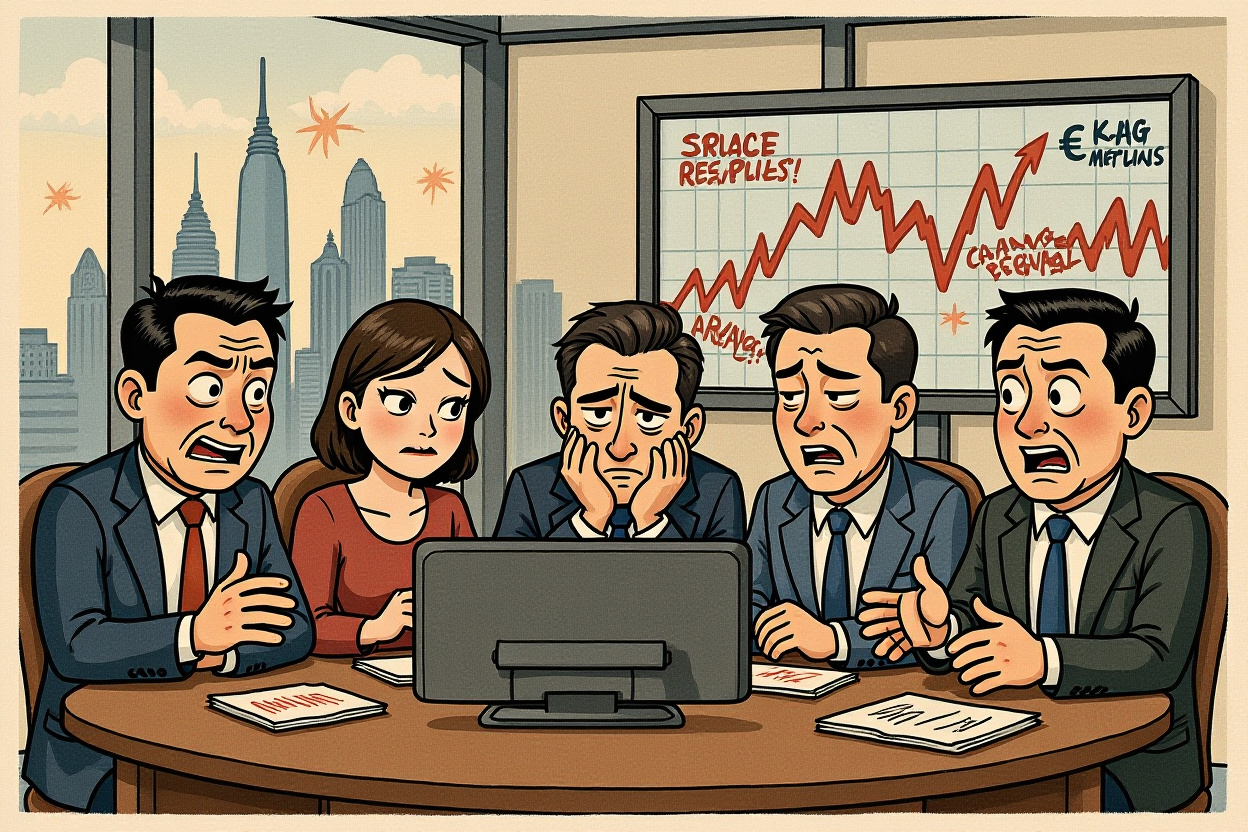Europe is facing an unprecedented financial storm as stocks, bonds, and currencies all experience significant declines simultaneously. This triple threat has sent shockwaves through global markets, raising concerns about economic stability and investor confidence across the continent. The convergence of these three asset classes crashing together represents a rare and alarming scenario that demands closer examination.
The Perfect Storm: What Triggered the European Assets Crash
The European assets crash didn’t happen overnight but resulted from multiple converging factors that created a perfect financial storm.
Inflationary Pressures and Central Bank Responses
Persistent inflation has forced the European Central Bank to implement aggressive interest rate hikes, putting pressure on both equity valuations and bond prices. Higher borrowing costs typically dampen economic growth prospects, making stocks less attractive while simultaneously decreasing the value of existing bonds with lower yields.
Stock Market Meltdown Across European Exchanges
European equities have experienced substantial declines, with major indices showing worrying trends that suggest deeper structural issues.
Sector-Specific Vulnerabilities
– Energy companies struggling with transition pressures
– Automotive sector facing Chinese competition and regulatory challenges
– Banking stocks under pressure from rising defaults and margin compression
Bond Market Turmoil and Yield Spikes
Government and corporate bonds across Europe have faced significant selling pressure, driving yields to multi-year highs and creating funding challenges.
Sovereign Debt Concerns</h3
Several European nations are showing concerning debt-to-GDP ratios that have investors questioning sustainability. The spread between German bunds and peripheral European debt has widened considerably, indicating increased risk perception.
Currency Depreciation: The Euro’s Decline
The euro has weakened significantly against major currencies, particularly the US dollar, creating additional complications for European economies.
Impact on Import Costs and Inflation
A weaker euro makes imports more expensive, particularly energy and commodities priced in dollars, which feeds back into inflationary pressures and reduces consumer purchasing power.
Geopolitical Factors Exacerbating the European Assets Crash
External political and economic developments have contributed significantly to the deterioration of European financial markets.
Energy Security Concerns
Continued uncertainty around energy supplies, particularly natural gas, has created persistent anxiety about winter shortages and price spikes that could further damage European competitiveness.
Comparative Analysis: How This European Assets Crash Differs From Previous Downturns
Historical context helps understand whether current conditions represent a temporary correction or something more fundamental.
Simultaneous Nature of the Decline</h3
Unlike previous European financial crises that typically affected asset classes sequentially, the current European assets crash involves correlated declines across stocks, bonds, and currency simultaneously.
Investor Implications and Portfolio Strategies
For those with exposure to European markets, understanding appropriate responses is crucial for capital preservation and identifying potential opportunities.
Defensive Positioning Approaches
– Increasing allocation to non-correlated assets
– Considering currency-hedged investments
– Focusing on quality companies with strong balance sheets
Looking Ahead: Recovery Scenarios and Timelines
While the current European assets crash presents significant challenges, understanding potential pathways to recovery helps frame investment decisions.
Catalysts for Stabilization
Several factors could help stabilize European markets, including moderation in inflation, resolution of energy supply issues, and more coordinated policy responses from European governments.
The European assets crash represents a complex interplay of economic, political, and market forces that requires careful navigation. While the simultaneous decline in stocks, bonds, and currency presents unusual challenges, it also creates potential opportunities for discerning investors. The path to recovery will likely require both external conditions improving and internal structural reforms within European economies. For market participants, maintaining a disciplined approach to risk management while watching for signs of stabilization will be crucial in the coming months. Stay informed about European economic developments and consider consulting with financial advisors to adjust your portfolio strategy appropriately for these challenging market conditions.




